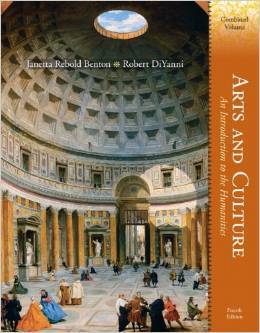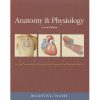Test Bank For Arts and Culture: An Introduction to the Humanities, Combined Volume (4th Edition) by Janetta Rebold Benton, Robert DiYanni Ph.D.
$35.00 Original price was: $35.00.$26.50Current price is: $26.50.
Test Bank For Arts and Culture: An Introduction to the Humanities, Combined Volume (4th Edition) by Janetta Rebold Benton, Robert DiYanni Ph.D.
This is completed downloadable of Test Bank For Arts and Culture: An Introduction to the Humanities, Combined Volume (4th Edition) by Janetta Rebold Benton, Robert DiYanni Ph.D.

Product Details:
- ISBN-10 : 0205816673
- ISBN-13 : 978-0205816675
- Author: Janetta Rebold Benton, Robert DiYanni Ph.D
- Now in full color, Arts and Culture provides an introduction to global civilizations and their artistic achievements, history, and cultures. The authors consider two important questions: What makes a work a masterpiece of its type? And what qualities of a work enable it to be appreciated over time? Critical thinking is also highlighted throughout the text with 4 different box features that ask students to explore connections across the humanities and different cultures. These boxes are entitled Connections, Cross Currents, Then & Now, and Cultural Impact boxes. Open the new fourth edition of Arts and Culture and open a world of discovery.
Table of Content:
Chapter 1: Prehistoric, Mesopotamian, and Egyptian Civilizations
Multiple Choice
- It is thought that the __________ was used for Old Kingdom tombs because, as one of the most stable geometric forms, it symbolized permanence to ancient Egyptians.
- circle
- cube
- sphere
- pyramid
- cone
Answer: D
Page ref: 22
- During the New Kingdom, burial in __________ replaced burial in pyramids.
- the temple
- rock-cut tombs
- a courtyard in the palace
- the city square
- none of the above
Answer: B
Page ref: 26
- The Human-Headed Winged Lion (fig. 1.9) with the body of a lion, wings of a bird, and head of a human probably functioned as a(n) __________.
- worshipper in the temples
- figure celebrating military victories
- guardian figure
- illustration of favorite stories
- king
Answer: C
Page ref: 13
- Which of the following is not true regarding Paleolithic sculpture?
- The most frequently depicted subjects are memory images of animals
- There are few figures of wood or other perishable materials that remain today
- The most famous example of a sculpture from the era is the Woman (or Venus) of Willendorf (fig. 1.2)
- In France, a clay sculpture of two bison was found
- No humans are represented
Answer: E
Page ref: 5
- The basic plan of the rock-cut tombs of the Middle Kingdom resemble __________.
- an Egyptian home of the time
- the pharaoh’s palace
- a typical Egyptian shop
- the simplest type of temple
- both B and D
Answer: A
Page ref: 26
- Egyptian relief sculptures and paintings show human figures both in profile and frontal positions simultaneously __________.
- t0 display each part of the body from its most characteristic point of view
- because artists were unskilled in drawing the human body
- because such a design was dictated by Egyptian religious beliefs
- none of the above
- both A and C
Answer: A
Page ref: 29
- The only significant break in the continuity of Egyptian life were the political, religious, and artistic changes during the reign of which pharaoh?
- Zoser
- Chefren
- Tutankhamen
- Akhenaten
- Mycerinus
Answer: D
Page ref: 31
- The ruler __________ is associated with an ancient code of laws and decrees.
- Naram-Sin
- Gilgamesh
- Hammurabi
- Nebuchadnezzar
- Ashurnasirpal II
Answer: C
Page ref: 12
- Some scholars believe that cave paintings were created to __________.
- ensure a successful hunt
- express the power of the ruler
- commemorate the death of a member of the group
- celebrate an abundant harvest
- represent gods
Answer: A
Page ref: 6
- King Nebuchadnezzar rebuilt __________ which became the greatest city in the Near East.
- Babylon
- Cairo
- Lagash
- Ur
- Persepolis
Answer: A
Page ref: 14
- The earliest burial places of the Old Kingdom Egyptian nobility were called __________, flat-topped one-story rectangular buildings with slanted walls.
- pyramids
- serdabs
- mortuary temples
- mastabas
- huts
Answer: D
Page ref: 21
- Scholars were able to decipher Egyptian writing by comparing the three
languages included on the __________.
- Palette of Narmer
- Rosetta Stone
- Stepped Pyramid of Zoser
- Book of the Dead
- wall relief of Ti Watching a Hippopotamus Hunt
Answer: B
Page ref: 18
- The term ka is roughly equivalent to the concept of __________.
- sin
- good versus evil
- heaven
- judgment
- a soul
Answer: E
Page ref: 20
- What is known of Paleolithic life derives largely from __________.
- cromlechs
- cuneiform writing
- relief sculptures
- paintings found in caves
- all of the above
Answer: D
Page ref: 5
- The Great Sphinx (fig. 1.17) __________.
- was placed in a Valley Temple
- is made of gold and semiprecious stones
- indicates the power of the pharaoh
- reappears in Classical Greek mythology
- none of the above
Answer: C
Page ref: 22
- In painting of the Neolithic era __________.
- paintings are located in rock shelters and beneath cliff overhangs
- the human figure is given prominence
- paintings feature more storytelling than in the Paleolithic era
- all of the above
- none of the above
Answer: D
Page ref: 6
- The oldest known major literary work in the world is called __________.
- The Iliad
- The Tale of Genji
- The Poem of the Supersage
- The Law Code of Hammurabi
- The Epic of Gilgamesh
Answer: E
Page ref: 10
- Egyptian relief work, such as Ti Watching a Hippopotamus Hunt (fig. 1.21), was meant to be
seen __________.
- by visitors to the nobleman’s tomb
- by no one
- only by the ka of the deceased
- by priests who came often to the tomb to perform rituals
- by those who discovered the tomb thousands of years later
Answer: C
Page ref: 25
- __________ is (are) the most common subjects for European cave paintings.
- Scenes of battle
- Animals
- Humans participating in religious rituals
- Women representing fertility goddesses
- none of the above
Answer: B
Page ref: 5
- __________ is not one of the standard poses for Egyptian sculptures of the human figure.
- Sitting on a block
- Standing with one foot forward
- Sitting cross-legged on the floor
- Kneeling on both knees
- Reclining
Answer: E
Page ref: 22
- Which of the following statements is true of New Kingdom temples?
- One of the largest is at Luxor
- The temples were considered the home of the gods
- They were constructed using the post and lintel system
- The entire temple complex was essentially symmetrical and organized around a longitudinal axis
- all of the above
Answer: E
Page ref: 26
- __________ is (are) not included in the Victory Stele of Naram-Sin (fig. 1.7).
- A mountain
- The ruler Naram-Sin
- An army victoriously marching up the mountain
- A representation of the temple
- A set of stars representing Naram Sin’s protecting gods
Answer: D
Page ref: 11
True/False
- A ziggurat is a mountain-like platform upon which Sumerians placed their temples.
Answer: T
Page ref: 9
- The prophet Zoroaster, a Persian, developed a dualistic religion that asserted the universe was divided between two forces, one good and the other evil.
Answer: T
Page ref: 15
- A serdab is a hidden room in a tomb that contains a statue of the dead person.
Answer: T
Page ref: 21
- Hieroglyphics was the writing system used by the Assyrians.
Answer: F
Page ref: 18
- Homo sapiens means “the ignorant man.”
Answer: F
Page ref: 5
- The process of brewing beer was developed by the Sumerians around 8000 years ago.
Answer: T
Page ref: 16
- Polytheism is the belief in a single god.
Answer: F
Page ref: 9
- The Palette of Narmer (fig. 1.14) comes from the Egyptian city of Hierakonpolis.
Answer: T
Page ref: 17
- The Mesopotamians used a form of writing known as cuneiform.
Answer: T
Page ref: 8
- A cromlech is a horizontal beam supported by vertical posts.
Answer: F
Page ref: 7
Short Answer
- Examine the form and purpose of the Woman (or Venus) of Willendorf .
- What is the most likely use of the architecture at Stonehenge?
- Trace the development of cuneiform writing.
- Summarize the Sumerian religion and include a discuss of religious architecture and artifacts.
- Describe the aspects of the rebuilding of Babylon by Nebuchadnezzar II.
- Trace the development of Egyptian funerary architecture of the Old Kingdom from the mastaba to
the pyramid.
- What is a ka statue and why was it made of stone?
- Explain the changes that took place during the reign of Akhenaten and the effects of these changes on art production of the time.
- Describe how ancient Egypt was imagined by Europeans during the late eighteenth and early nineteenth century.
- What do wall paintings suggest about dance and music in ancient Egyptian world?
Essay
People Also Search:
arts and culture an introduction to the humanities combined volume
arts and culture an introduction to the humanities combined volume 4th edition
arts and culture an introduction to the humanities combined volume download scribd
arts and culture an introduction to the humanities combined volume testbank download pdf
Related products
Test Bank
Test Bank for Decision Support and Business Intelligence Systems, 9th Edition: Efraim Turban











